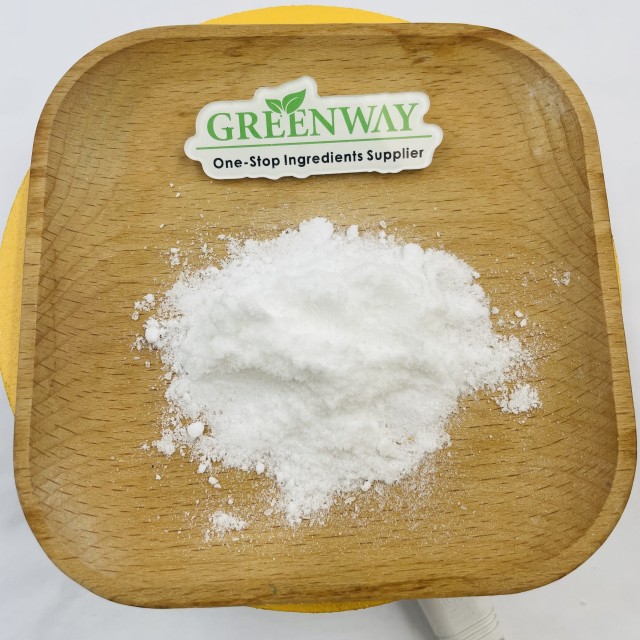
Salicylic acid is an organic acid that occurs naturally in willow bark and belongs to the BHA (beta-hydroxy acid) family.
| Product Name | Salicylic Acid |
| Appearance | White Crystalline Powder |
| Specification | 99% |
| CAS | 69-72-7 |
| Package | 1kg/aluminum foil bag; 25kg/drum |
| Sample | Available |
| Storage | Dry Place |
| Shelf life | 2 Years |
The free acid of salicylic acid is used externally to treat skin diseases, while many esters and salts of salicylic acid are absorbed through the skin or taken internally to treat other diseases. Therefore, the effect of salicylic acid is largely dependent on the route and form of administration. Salicylic acid, on the other hand, has a broad range of actions that can be divided into 10 different actions.
(1) At very low concentrations (≤0.3%W/W), salicylic acid has bacteriostatic effect on violet-positive and negative bacteria, pathogenic yeasts, skin molds, etc. At a slightly higher concentration (about 10 times the minimum inhibitory concentration), it has a bactericidal effect on stationary and multiplying microorganisms. Salicylic acid has been used in recent years as a broad-spectrum microbiologically safe, well-tolerated, colorless skin antibacterial agent.
(2) When the concentration is 0.1% (W/W) or above, salicylic acid has obvious acidogenic effect on the skin surface.
(3) The same concentration of salicylic acid has anti-light effect, which is equivalent to 60% absorption rate of ammonia benzoic acid.
(4 and 5) Also at low concentrations, especially in dermatological topical solutions, salicylic acid has superficial astringent and antipruritic effects.
(6) When the dosage form and concentration are appropriate, salicylic acid also produces direct anti-eczema and anti-inflammatory effects. In guinea pigs, dermatitis is induced by ultraviolet rays. The local anti-inflammatory effect of salicylic acid is equivalent to 63-66% of phenylbutazone or indomethacin, about 77% of acesalic acid, and about 82% of hydrocortisone.
(7) Concentrations of 5% and above (adjusted according to the special type of excipient, the way of use, that is, open or closed, and the duration of treatment), salicylic acid has a rapid and deep keratolytic effect on the stratum corneum . Finally there is exfoliation, causing skin maceration and epidermolysis.
(8) Ointment with a concentration of 1% to 4% has the effect of keratin dispersing and surface keratin separation, causing scaling release (that is, scaling off and elimination of scabs). Anti-hyperkeratotic (keratin stabilization) and anti-parakeratotic effects, normalize the process of keratinization.
(9) Since salicylic acid has a keratin-diffusing ("softening") effect on the stratum corneum, that is, superficial keratolytic effect, and keratolytic effect at high concentrations, salicylic acid can promote simultaneous or subsequent topical use of other drugs penetration.
In paste and ointment formulations with salicylic acid concentrations between 0.5% and 2% (even above 5%), there is a keratinizing or stabilizing effect. But so far, there is no satisfactory explanation for the pharmacokinetics of this effect. This may be due to the adaptation phenomenon of quasi homoeopathic, in which relatively weak keratolytic stimuli can lead to increased reactive keratinization.
(10) The epidermal formation effect of salicylic acid, especially its anti-epidermal hyperplasia effect, is still largely unexplained. The author used 3% salicylic acid ointment, which can be seen to inhibit the pathological excessive epidermal epithelial hyperplasia, which is similar to the external application of corticosteroids, and has a synergistic effect with external application of corticosteroids. In contrast, Marks et al. used (2-12 %) salicylic acid ointment and obtained opposite results on healthy human skin, and they reported an increase in epidermal formation proportional to the topical salicylic acid concentration. Theoretically, the two reactions can be coordinated with the action of the material on the corner layer. Partial loss of the stratum corneum stimulates keratinocyte proliferation. However, the keratolytic effect can be accompanied by salicylic acid inhibiting the regeneration or vitality of the spinous cell layer. This is true at least at the site of pathological proliferation or at concentrations below 5% w/w that do not produce strong keratolytic or epidermal (exfoliation) effects.
Salicylic acid has antibacterial and antifungal effects, but it varies with the concentration. Low concentration (1% to 2%) has antipruritic and keratinizing effects, can restore the stratum corneum to normal, and can reduce the infiltration of cells in the dermis, so that the pathological state gradually disappears. The concentration of 3% to 6% has antifungal effect and can inhibit or kill superficial skin fungi. Higher concentrations (6% to 10%) have a keratolytic effect, which can loosen the epidermis and make it easy to fall off. A high concentration of more than 20% has a corrosive effect. Topical application still has the effect of inhibiting the secretion of sweat glands. It is clinically used for tinea capitis, tinea pedis and other superficial skin fungal diseases, as well as corns, calluses, chapped hands and feet, and itching.
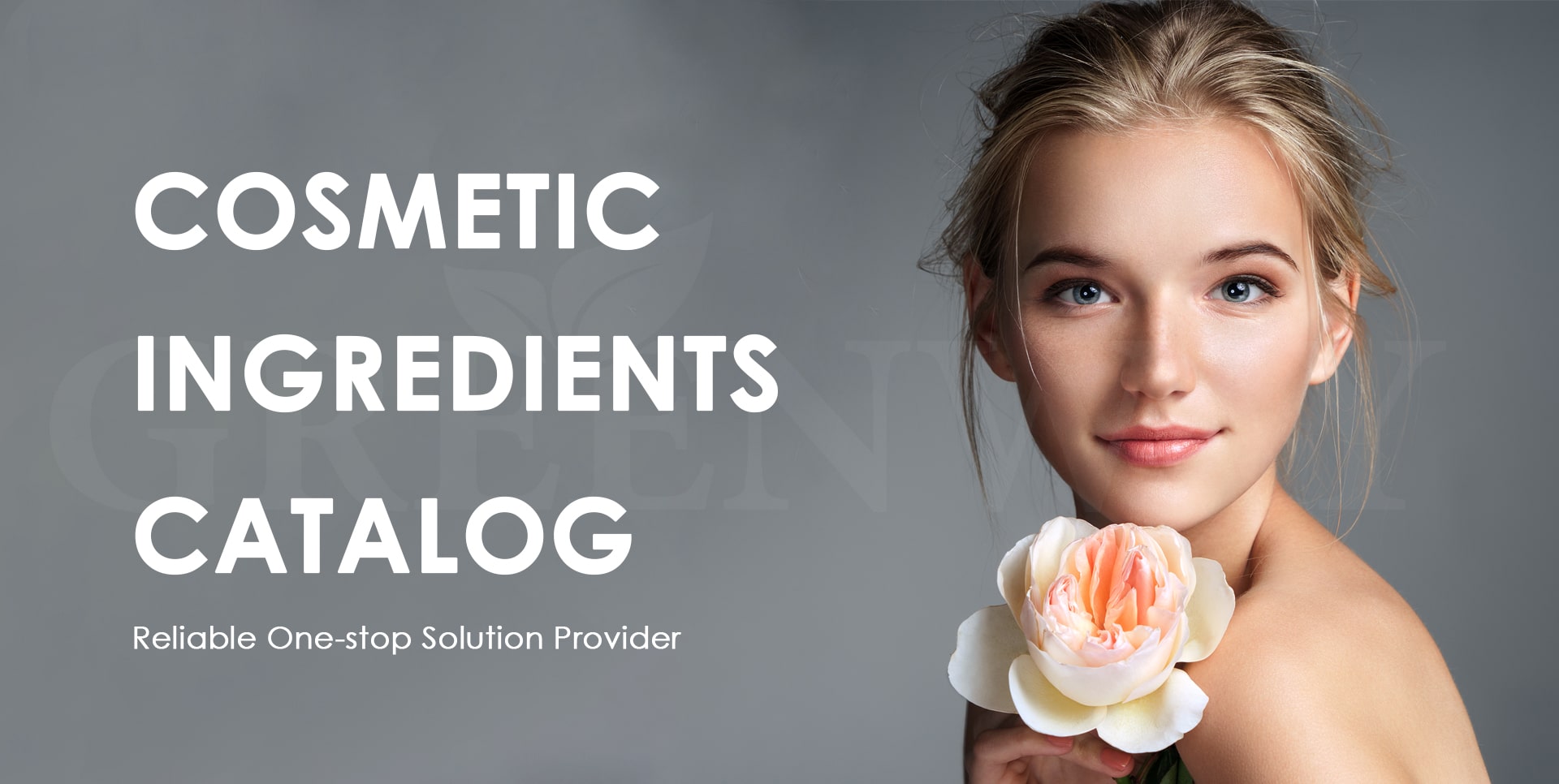 |
||||||||
| Whitening Agents Browse our wide selection active whitening ingredients |
||||||||
| Abstract Skin whitening products are commercially available for cosmetic purposes in order to obtain a lighter skin appearance. They are also utilized for clinical treatment of pigmentary disorders such as melasma or postinflammatory hyperpigmentation. |
Whitening agents act at various levels of melanin production in the skin. Many of them are known as competitive inhibitors of tyrosinase, the key enzyme in melanogenesis. |
|||||||
| Cas No. | Product Name | Cas No. | Product Name | |||||
| 183476-82-6 | VC-IP/Ascorbyl Tetraisopalmitate | 1077-28-7 | A-Lipoic Acid | |||||
| 84380-01-8 | Alpha Arbutin | 305-84-0 | Carnosine | |||||
| 497-76-7 | Beta Arbutin | 497-30-3 | Ergothioneine | |||||
| 53936-56-4 | Deoxyarbutin | 175357-18-3 | Undecylenoyl Phenylalanine/Sepiwhite MSH | |||||
| 501-30-4 | Kojic Acid | 331-39-5 | Caffeic acid | |||||
| 79725-98-7 | Kojic Acid Dipalmitate | 86404-04-8 | 3-o-ethyl ascorbic acid | |||||
| 123-31-9 | Hydroquinone | 103-16-2 | Monobenzone | |||||
| 1105025-85-1 | Dimethymethoxyl Chromanyl Palmitate | 114040-31-2 | Magnesium Ascorbyl Phosphate | |||||
| 1197-18-8 | Tranexamic Acid | 66170-10-3 | Sodium Ascorbyl Phosphate | |||||
| 922165-31-9 | Neosolue-aqulio | 123-99-9 | Azelaic Acid | |||||
| 96702-03-3 | Ectoin | 84696-21-9 | Hydrocotyle Asiatica Extract | |||||
| 83923-51-7 | Dimethylmethoxy Chromanol | 90-64-2 | Mandelic acid | |||||
| 79-14-1 | Glycolic Acid | 73-31-4 | Melatonin | |||||
| 7402-28-0 | 1,4-Dipropionyloxybenzene | 152312-71-5 | Potassium 4-Methoxysalicylate/4-MSK | |||||
| 1077-28-7 | A-Lipoic Acid | 129499-78-1 | Ascorbyl Glucoside/AA2G | |||||
| 305-84-0 | Carnosine | 69-72-7 | Salicylic Acid/BHA | |||||
| 497-30-3 | Ergothioneine | - | Alpha Hydroxy Acid/AHA | |||||
| 175357-18-3 | Undecylenoyl Phenylalanine/Sepiwhite MSH | 83-86-3 | Phytic acid | |||||
| 331-39-5 | Caffeic acid | - | Snow White | |||||
| 98-92-0 | Niacinamide | - | Giga White | |||||
| 90082-87-4 | Plum, ext | - | Glabridin | |||||
| 36062-04-1 | Tetrahydrocurcumin | 36062-04-1 | Tetrahydrocurcuminoids | |||||
| 85-27-8 | Symwhite 377/Phenylethyl Resorcinol | 68797-35-3 | Dipotassium Glycyrrhizinate | |||||
| 922165-31-9 | Neosolue-aqulio | 19771-63-2 | Procysteine | |||||
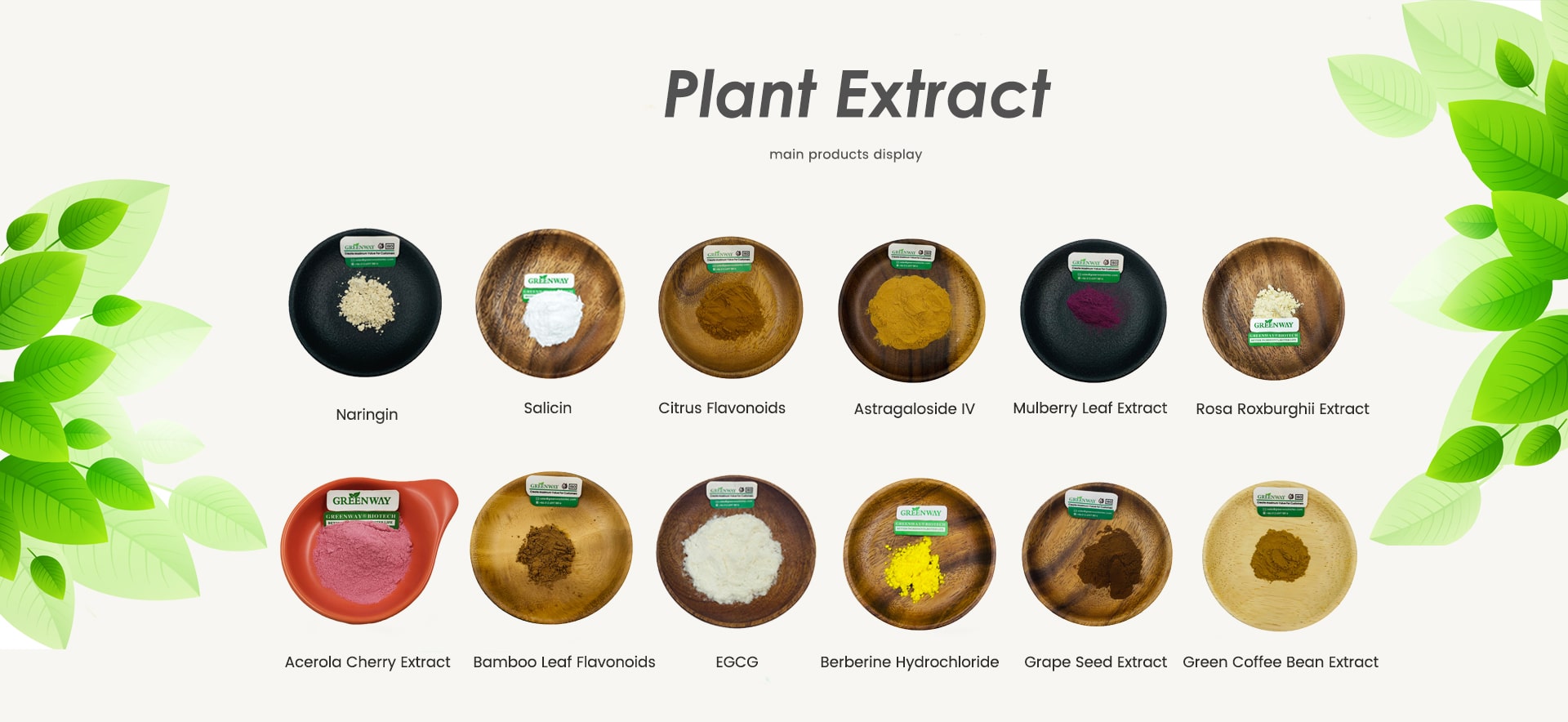

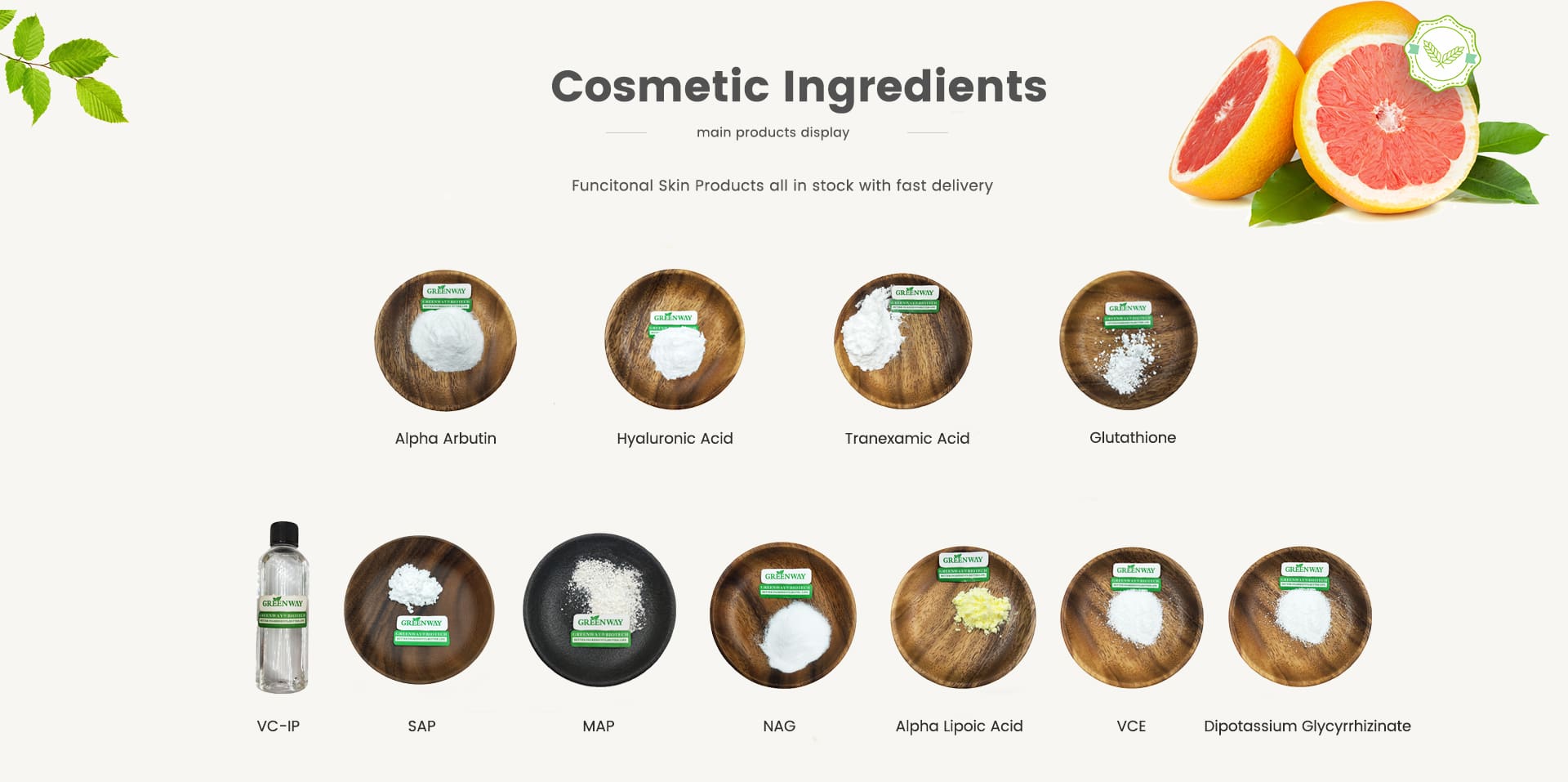
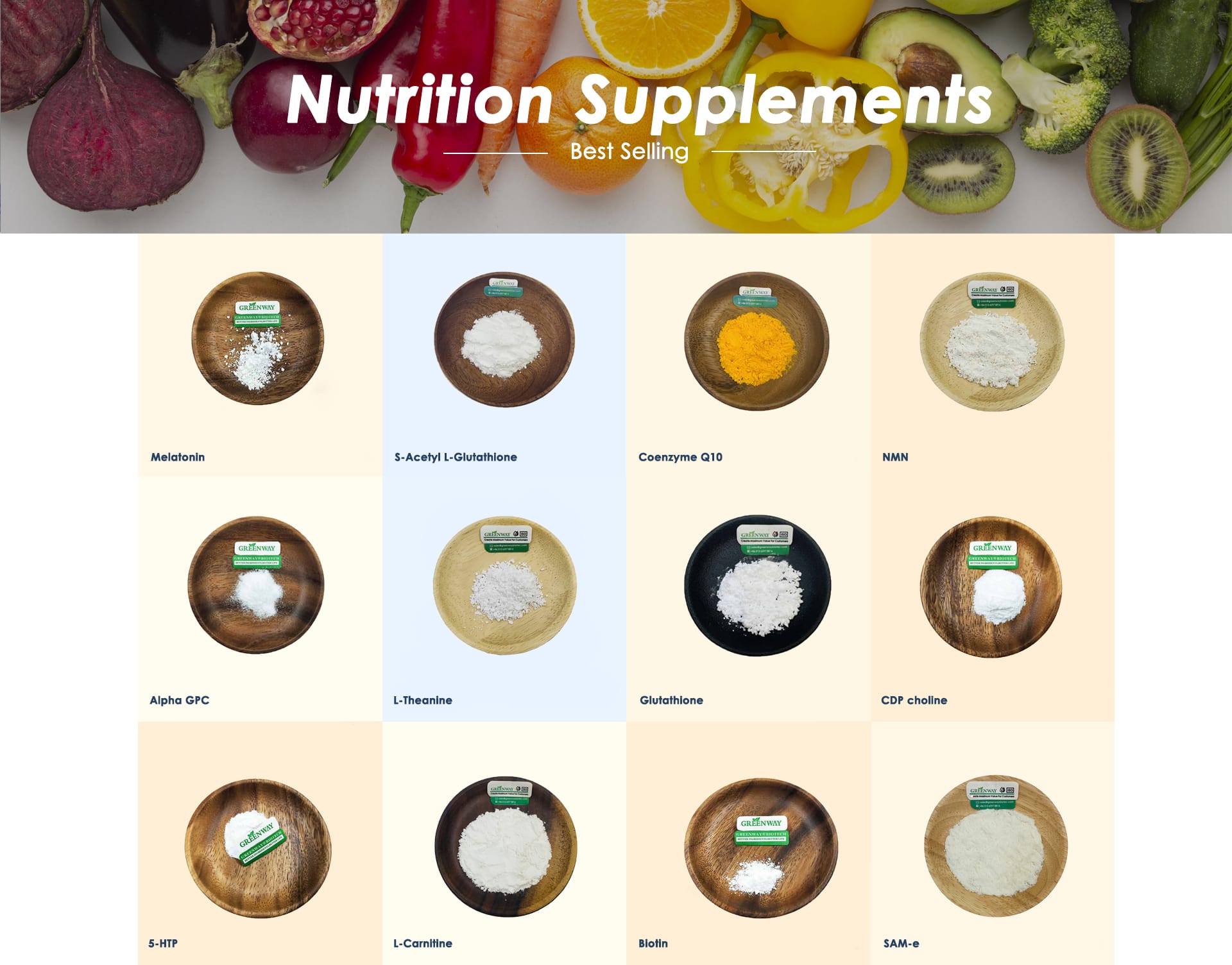



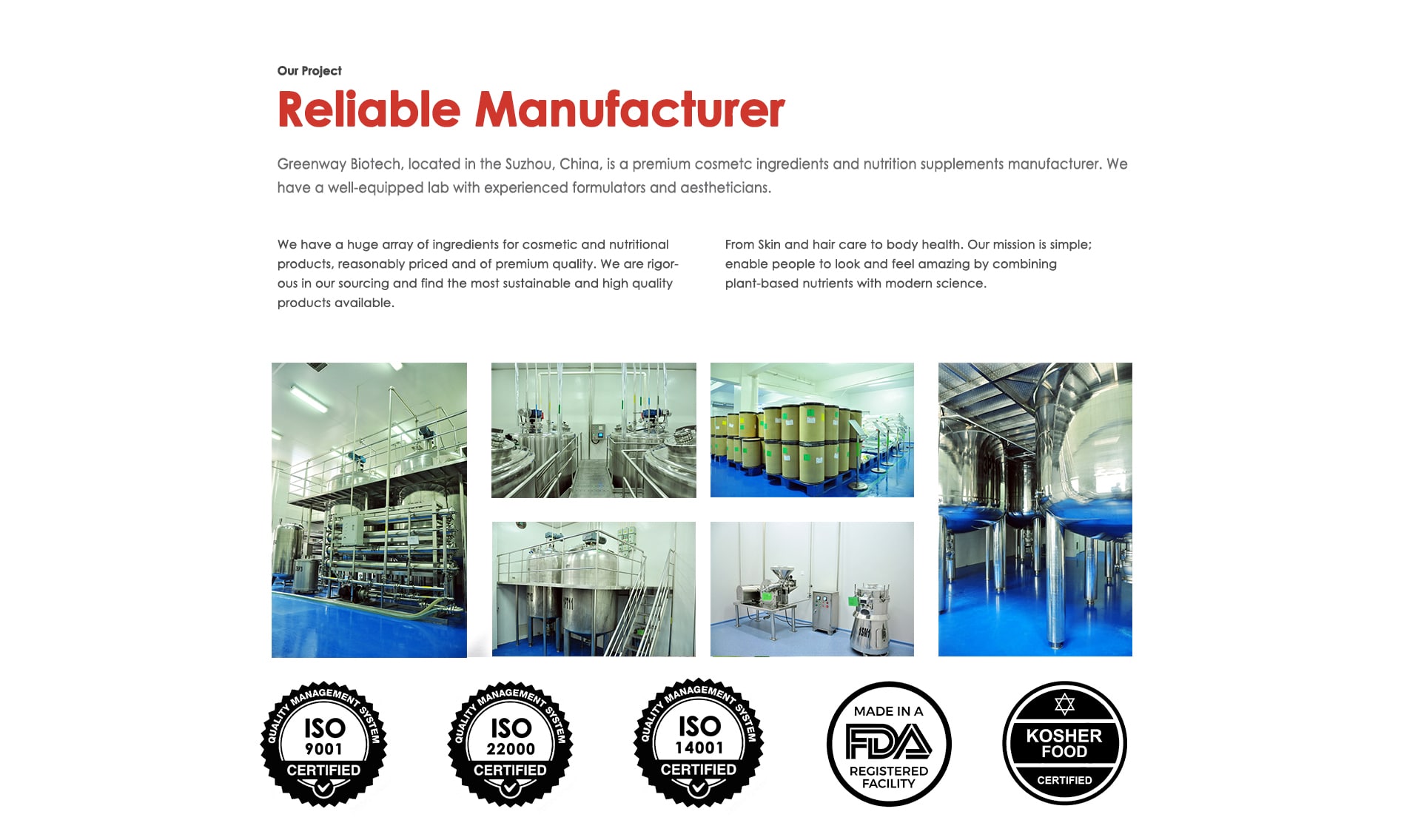
Hot tags:
Learn about our shipping methods for international cosmetic ingredients, plant extract and supplements orders. Our international carriers include FedEx, UPS, and DHL Express. Choose a shipping option that best fits your budget and needs. However, in some cases we reserve the right, without notice, to change the shipping service on your order due to high value. UPS will be switched to FedEx Ground and a signature upon delivery will be required. All orders are shipped from our warehouse in China.
We ship to over 150 countries worldwide and have over 4 years of experience dealing with international shipping documentation. Please note that shipping charges may vary from the amount indicated by the automatic shipping calculator since the weight calculated on the website may differ from the actual package weight due to the packaging material. There is no handling fee for all international orders.
Customs fees, VAT, or value added tax, and sales tax are typically charged by the government of your country and must be paid by the customer once the package arrives. We cannot determine what these fees will be. We recommend that you check with your local customs office or post office for details on how these charges are assessed and applied. For customs clearance, a customs broker is usually needed who may charge you a brokerage fee. Packages may be held up in customs for a few days and will delay delivery.


Worldwide Expedited: offers customs-cleared, day-definite delivery to more than 220 countries and territories in two to five business days.
Worldwide Express: this service offers guaranteed delivery in 1-3 business days depending on the destination. Service is available in 185 countries and territories.
Worldwide Saver: offers guaranteed afternoon delivery in 1-3 days for your international shipments. Next business day delivery to Canada, two business days to Europe and Latin America, and two or three business days to Asia. Service is available in 215 countries.

DHL Express Worldwide: DHL offers exclusively express shipping services around the globe. Slower shipping services that take longer than four to five days are not available with DHL. The Express Service is a time-sensitive service with proactive delivery notification available on request. Delivers by the end of the next possible business day. Intercontinental shipments usually take three days.

